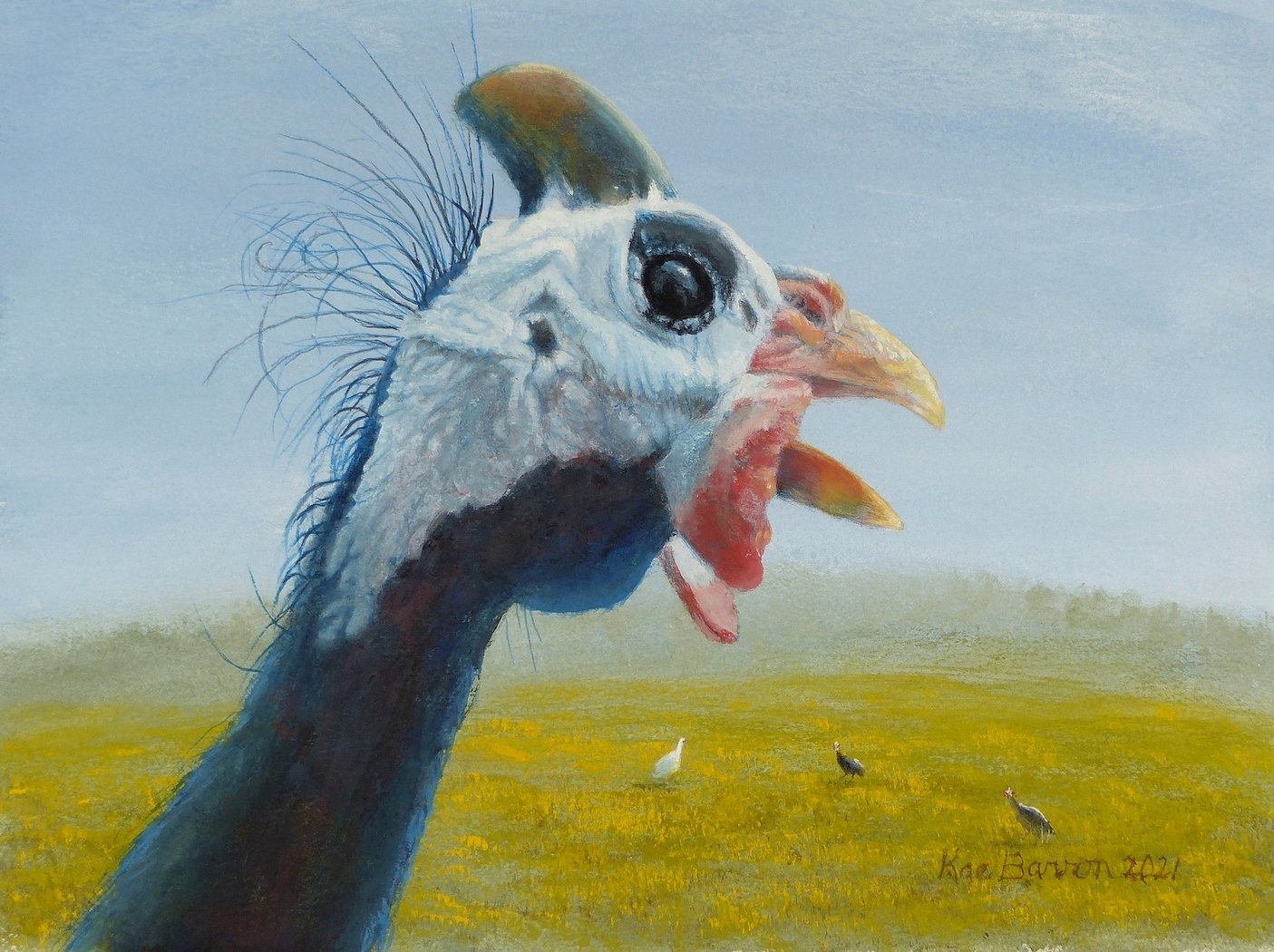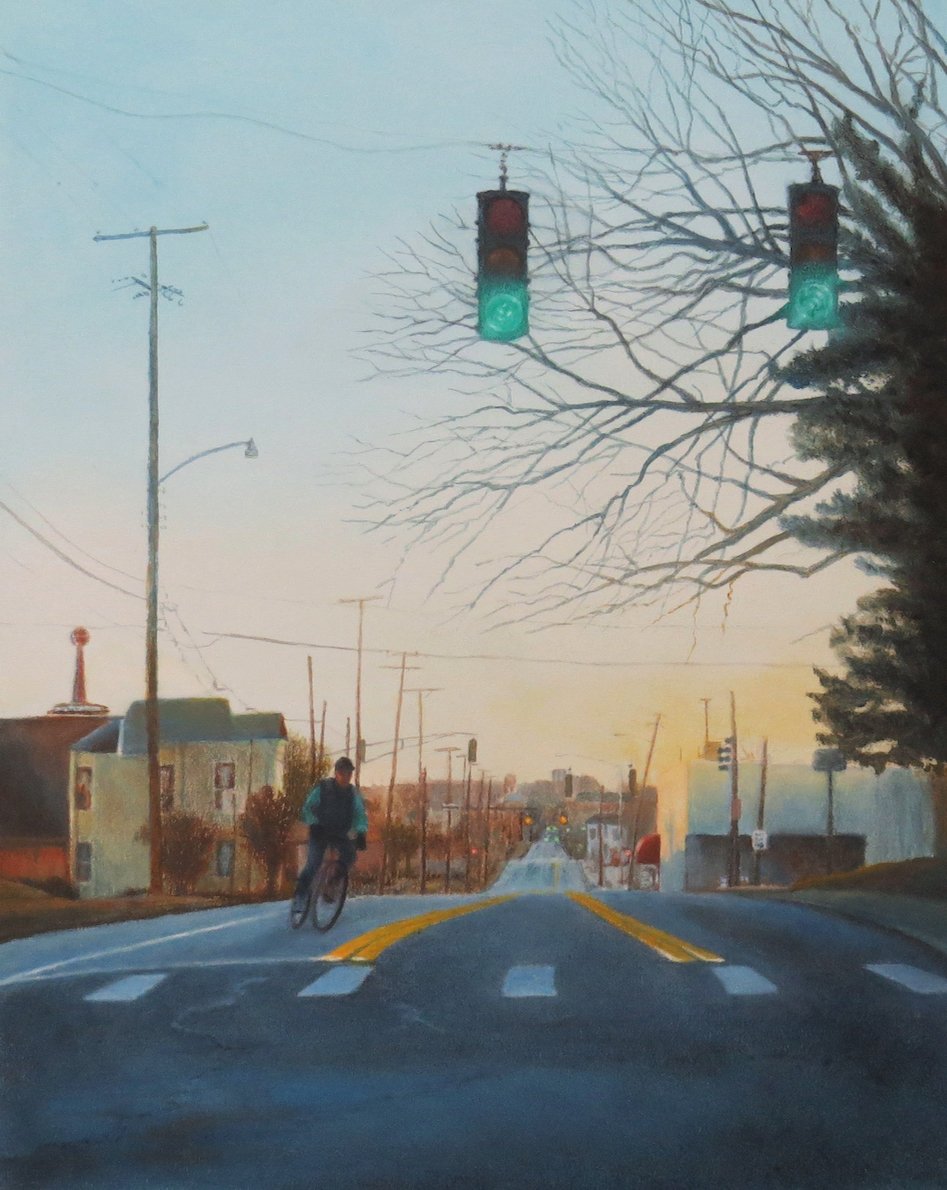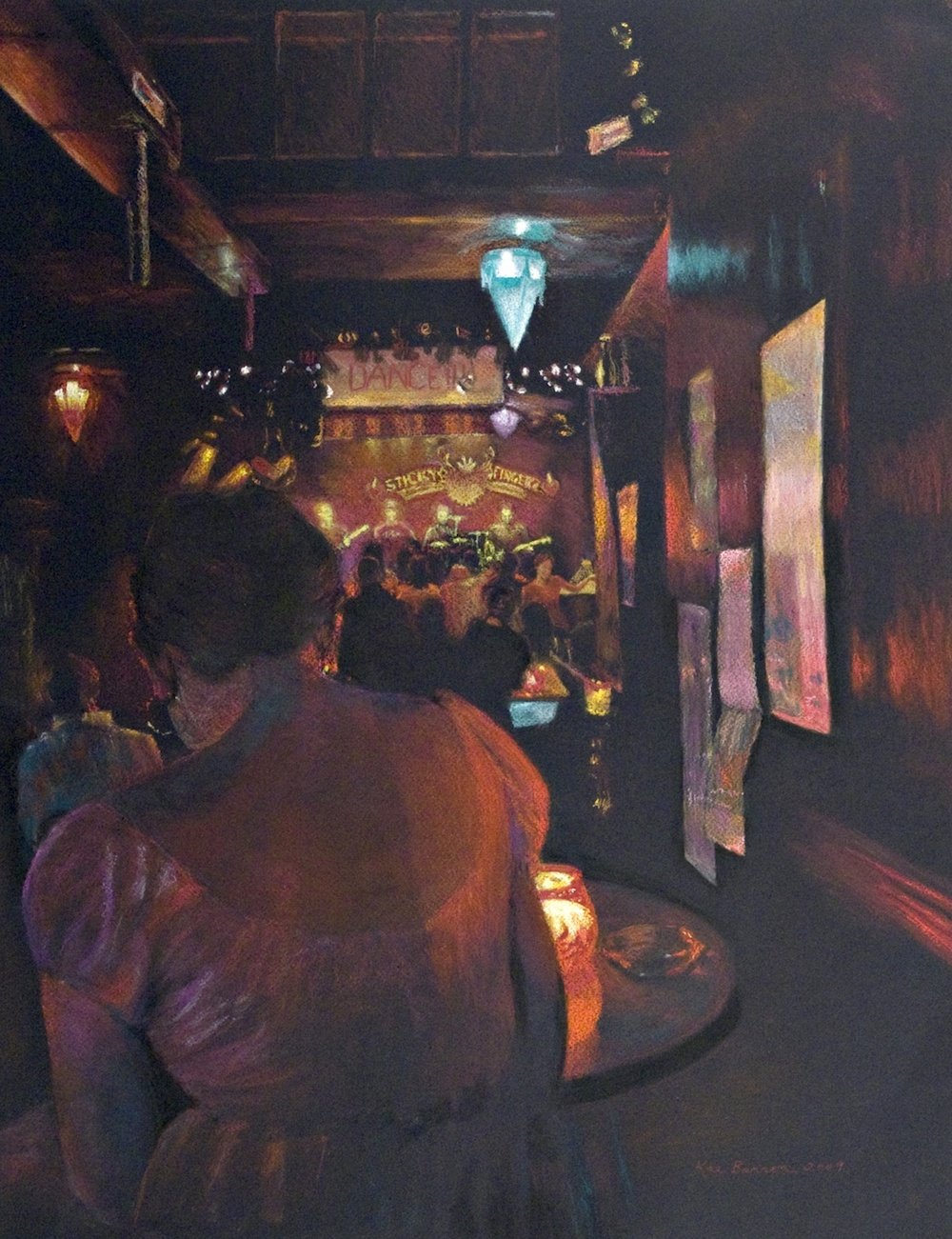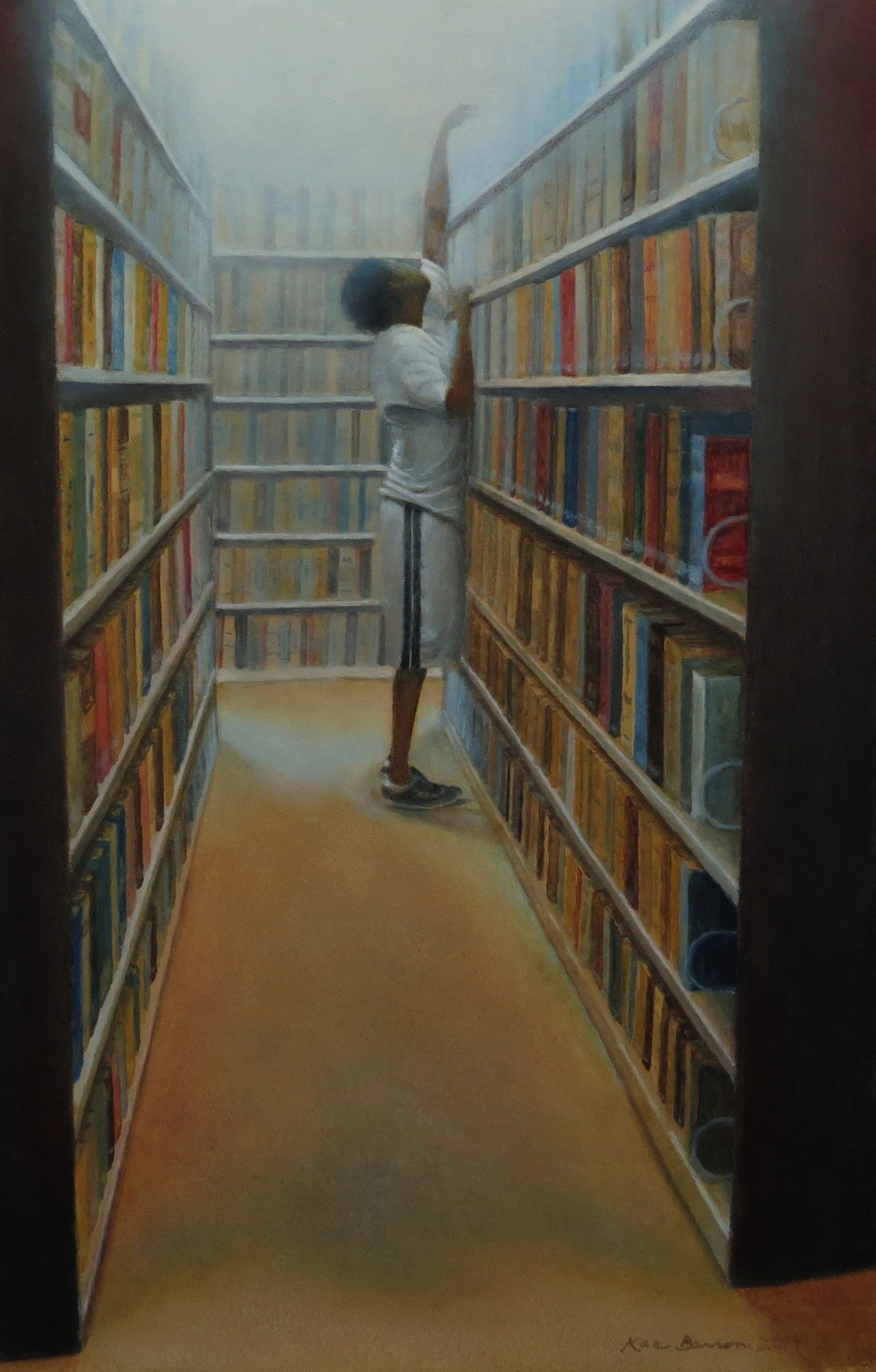Interview with artist Kae Barron
Kae Barron is an artist living and working near Benton, Arkansas. She grew up in a very artistic family that instilled in her the importance of creativity in all its many forms. Kae likes to document the ‘ordinary’ in captivating ways using color, light and composition, and in a variety of media. More of her work can be viewed at Cantrell Gallery in Little Rock.




AAS: Kae, you are not originally from Arkansas. What brought you to Arkansas?
KB: Yes, I grew up in Florida. When I was fourteen, my dad, Warren Criswell, decided to sell everything, convert a city bus into a motorhome, and take us all on a trip. He wanted to write a futuristic book about climate disaster. We went various places around the eastern U.S. He usually says we ended up here because this is “where the bus broke down.” I suspect many people who follow the arts in Arkansas have heard the story. I was eighteen when we settled in Arkansas. It was a “long strange trip,” and here we are.
AAS: In addition to painting, you work with your mother in her embroidery design business. You come from a very creative family.
KB: Yes, my mother did a lot of needlework and other crafts when my sister and I were kids. She taught us those skills and we loved making things. My dad had a job as a surveyor, but wanted to be a writer, so he was always at his typewriter and quit the surveyor job at some point. I remember him doing ballpoint pen drawings and some abstract paintings. There were some of his paintings on the walls in the garage. I really liked to draw when I was a kid. So, I had a lot of influences. I was interested in so many different things. Drama, dancing, music, visual art, crafts – too many things.
But back to embroidery. As far as crafts go, I was particularly taken with embroidery when I was young. Hand embroidery is very time-consuming. So, when my mother discovered home embroidery machines in the mid 90s, I was pretty excited about it. It was possible to digitize an embroidery design with a computer program and put it in the machine and it would stitch it. Pretty cool. I learned how to digitize, and we started selling my designs online. Before long, were able to do that full-time. I was so happy to have a job that I actually enjoyed, as opposed to just going to work every day in order to make a living. I really put everything into that job. I worked all the time. I researched different types of embroidery, figured out how to make lace on a home embroidery machine, etc. It took up all my time, but it was fun. We still work at that business.
AAS: What made you decide to start painting again. Any advice for those who want to start painting or get back into it later in life?
“…it’s good to feel like I’m still learning and improving and that the excitement of that will last for the rest of my life.”
KB: It’s hard to pinpoint exactly what changed. One thing was that I didn’t need to work day and night at the business like I did in the beginning. Another factor was that I finally got to the end of my college degree. I really wanted an education, so I would go to school off and on as much as I could while working, which was very demanding. I didn’t finish my degree till pretty late in life. It wasn’t an art degree. I studied psychology and literature.
I think I always wanted to be an artist, but there were things holding me back. Economical things, finding the time, feeling like I wasn’t really equipped to be an artist because I didn’t know enough, and the big thing, my father being an artist. There’s an intimidation factor, a “being in a shadow” factor, etc. (That was not due to anything he did, he’s always been encouraging; it was my own psychology at work there.)
As far as advice, I’m not really one to give it. I often feel I should have done this or should have done that. Uncertainty reigns. For me, it was important to learn as much I could. I didn’t get formal art training, but I did, and still do, a lot of reading and observing and practicing. I do believe that people should not worry about starting later in life, though. I worried about it a lot. But it’s good to feel like I’m still learning and improving and that the excitement of that will last for the rest of my life. People may feel more creative and full of zeal when they’re younger; but life experience and maturity gives us much more to draw from.
AAS: What I love about your work is your choice of subject. You seem to like to capture the everyday event. I am thinking here of Arkansas Summer and Reshelving. They couldn’t be more different, but they are both captivating.
KB: Thank you. It’s hard for me to explain why “the everyday event” is my main subject matter. But the themes I’m interested in, themes that are common to all humanity, and sometimes even all life, are evident in the everyday event. Usually, I see something, and it catches my attention. Something in it is meaningful to me. When I paint it, I use certain light or composition or whatever to kind of bring out the stuff I’m feeling or thinking.
Arkansas Summer, 9” x 12”, egg tempera on board
Arkansas Summer really didn’t come about because of any big ideas. I just saw that squirrel out on my patio/driveway. I feed birds, so there are usually seeds on the ground by the patio, and I put water out for them. The squirrel would eat or drink and then run under our truck and flatten out in the shade. It was a very hot day. The squirrel just looked so funny flattened out like that. So, in a way, it’s just a squirrel looking funny. But it was trying to survive the heat, so it’s also about vulnerability, which is a major theme in my work. Some people think that squirrel was flattening out under a moving vehicle. It doesn’t matter to me how it’s seen. Both ways work.
Reshelving, 18” x 24”, oil on board
Reshelving happened differently than my paintings usually happen, in that I had an idea and deliberately created the event I had in mind. One thing I like to include in my work is a tension between nature’s activity and human activity. That is, nature is full of curves and seemingly chaotic wildness, whereas humans like to organize things – keep them in straight lines and categorized. I had seen a painting by John Rogers Cox called Gray and Gold. What jumped out to me in that painting was the extreme contrast between the straight lines of the crossroads and cultivated fields against the curvy, stormy clouds.
Thinking about that painting reminded me of a painting I’d done earlier of a young woman in the Little Rock library – the contrast between the humanly organized interior and the wilder stuff outside. I got a picture in my mind of someone reshelving books, trying to keep everything categorized properly, while outside, nature storms. So my husband and I went to the library and I finally found a good spot and he posed. It just happened that he pulled out a book with flames on the cover (a book about Burning Man). I took some reference photos. To me, Reshelving is about the things I’ve mentioned – how we try to put things in order to stave off chaos and distract ourselves from our impending doom. Of course, the times we live in are filled with increasing natural disasters: storms, wildfires, a pandemic. All those are represented in the painting just because that’s what happens to be going on now. It’s a way of exploring those larger themes.
AAS: Arkansas Summer and many other of your paintings are done in egg tempera. Would you describe the process of using egg tempera?
KB: Egg tempera is a very old, actually ancient, medium. It was used during Greco-Roman, medieval, and early Renaissance periods before oil became the dominant medium. But I learned about it because Andrew Wyeth used it. I’ve always been very taken with his work.
The process of making the paint is part of the reason I enjoy using it. It’s just cool to make my own paint with an egg. It’s very simple to make the paint from dry pigment, egg yolk, and water. To make the medium, separate an egg, puncture the yolk’s membrane and collect the yolk. Mix in a little distilled water, so it’s a creamy emulsion. Then, create a paste from the dry pigment and a little water. Add the yolk medium to the pigment paste and you have egg tempera.
Egg tempera requires a rigid surface, as it is not a flexible medium. And the surface must have certain levels of absorbency and tooth, so that it will adhere. It’s a very fast-drying medium. If you want to do a smooth wash, you have to be very fast and then don’t mess with it. But with practice, a lot of things can be done with egg tempera. The speedy drying is great because I can get on with the next layer much quicker than I can with oil. Also, it’s easier to get fine detail with egg tempera than with oil or acrylic. Even though egg tempera dries quickly, applying it just feels good. It has a wonderful sort of oily spreadability. Plus, with tempera, you can scratch through it and do some things that can’t be done with acrylic because acrylic will sort of peel if you try to subtract anything. I also like the velvety, matte finish of egg tempera. All mediums have their positive and negative aspects, but egg tempera is one of my favorites.
“I like to try to create mood with the effects of light.”
AAS: Electric Kettle has a very sculptural quality. It is marvelous – the design of the painting and the ‘coloration’!
Electric Kettle, 12” x 9”, acrylic on board
KB: Sometimes monochrome can add drama. I did some sculpture in my thirties. It seemed very intuitive for me. I know how things exist in their 3D space. I enjoyed it. I did carving and modeling. Translating the 3D world to 2D in drawing is a whole different thing, and, for me, more difficult. However, for the things I want to express now, drawing and painting are the ticket. I like to try to create mood with the effects of light. When I start a painting, I’m filled with anxiety. Awhile into the painting, I think, “This is never going to work! I can’t do this! This is awful! I’ve ruined it!” But I keep going, and usually at some point, when I step back and look at it, I get a wave of emotion. Once that happens, I know I’m on the right track. After that, I’m excited and happy working on the painting till it’s finished. For now, I think painting and drawing are the best way for me to elicit mood. It’s possible that I’ll do more sculpture if I happen to have an idea that I feel would be best expressed that way.
AAS: Another piece that has a sculptural quality is Pineapple. This one is in pastel. Why did you choose pastel?
Pineapple, 25” x 19”, pastel on paper
KB: I’ve worked with pastel a lot in the past. Some of that is because of convenience. It’s a dry medium. It’s easier to handle than paint. Plus, I always liked Degas’ work, and he did a lot of pastel. When I started getting back into fine art, I started with drawing and linocut. For drawing, I used mostly charcoal and conte crayon. Pineapple is actually the first thing I did in color. I used pastel because it’s the most like drawing and I had the most experience with it. I still use pastel occasionally. These days, I only use it for smaller things. That’s just for practical reasons. Pastel has to be framed with glass. Framing large things with glass is not my favorite thing to do.
I remember getting that pineapple and thinking it was a really dramatic looking thing. All threatening with its pointy bits – its armor. I liked the way the points in the knife mirrored the points in the fruit. The pineapple puts up its best defense, but it’s about to meet its demise.
AAS: You have a show right now at Cantrell Gallery – a very successful show. You have been with Cantrell Gallery for many years, right?
KB: Yes, I showed there a bit in my twenties, but after getting back into it, they accepted me as one of their artists in 2007. I’ve been with them ever since. Helen and Cindy and Clarke are great people to work with. I like how their gallery is organized, each artist with their own wall. They keep a certain number of an artist’s works up at all times. And the artists have periodic solo exhibits with opening receptions, which is good for the artists’ visibility. My dad started showing with Helen and Norman when he first started his art career here, before they moved and changed their name to Cantrell Gallery. In 1982, a tornado destroyed my parents’ home, along with pretty much everything in it. My husband and I were living with them while we fixed up a house we had bought next door. I remember Helen and Norman coming out, taking us to a motel, and generally helping us through the aftermath. They are all very kind and wonderful people.
AAS: You know that my most favorite piece from the show is Morning Rays. It’s not just that it is beautifully drawn. When I was growing up my grandmother had guineas in their yard. The birds in the drawing remind me of her.
KB: That’s very cool! Our neighbor’s guineas have taken up residence in our yard. We enjoy having them around. And I’ve taken the opportunity to use them in my art a few times. With this drawing I really wanted to try to render that slanted misty morning light. I think most people associate a mood with that kind of light. Also, the theme in this show had to do with communication. I used Walt Whitman’s poem, “A Noiseless Patient Spider” in my statement for the show. Whitman talks about the spider reeling stuff out of itself. Then he compares the spider to himself, the poet, flinging his “gossamer thread,” hoping it will “catch somewhere.” It made me think of all the ways life forms send out messages. Even flowers put out electromagnetic fields that attract bees. Anyway, guineas are very social and are always together “talking” to each other. Also, in that drawing, there are two guineas who appear to be having a conversation or kissing or something.
Morning Rays, 11” x 14”, charcoal on matte drafting film
AAS: Kae, what do you think is the most important thing you learned from your dad about painting and drawing and being an artist?
KB: That’s a hard one. In practical terms, my dad has always emphasized the importance of using archival materials. And even though I tend to not think my work (or anything else) is going to be around forever, his attitude about that has been effectively transferred to me. I don’t want to use materials that won’t last. Also, I have curiosity about materials and techniques. I like to try new things and experiment, like my dad. My dad’s career shows that you don’t have to stick to one thing.
More importantly, though, are things that have to do with attitude, and are harder to explain. Artistic integrity has always been very important to my dad. He didn’t do things because he thought they’d sell, or not do them if he thought they wouldn’t sell. I’m sure that’s a common attitude among artists; but so is the desire for “success.” An artist has to find a way to balance these drives. It’s easy to say, “I’m being true to myself, so big deal if people don’t like my work now. Van Gogh never sold anything, either.” My dad would say that’s just an excuse. The two drives kind of wrestle with each other in artists like my dad (and me).
I would say that his attitudes and the things he’s said have helped to instill a certain way of thinking in me. I want to be true to my vision, of course. But in a way that allows others to have their own experience with the work. I hope people can find some resonance in it. Being true to myself doesn’t mean much if it has no value to anyone else. I don’t know if my dad would say exactly that, but that’s how it’s evolved in me.







